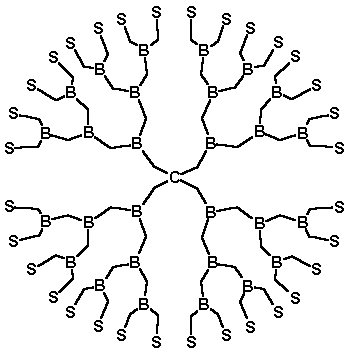| The projects listed below
are some of those available in for Entry in 2007. We welcome
applications from students interested in the one-year MSc by Research
Programme as well as the PhD programmes.
Contact
polymer@reading.ac.uk for more information |
Electro spinning of nanofibres
Elastic electrically
conducting composites
Biophysics of elastic proteins
Artificial Muscles
Controlled
crystallisation of pharmaceutical compounds |
Modelling crystallization
in polymers
Polymer
Research using
Synchrotron Radiation
Polymer
Research using Neutron Scattering Procedures
|
|
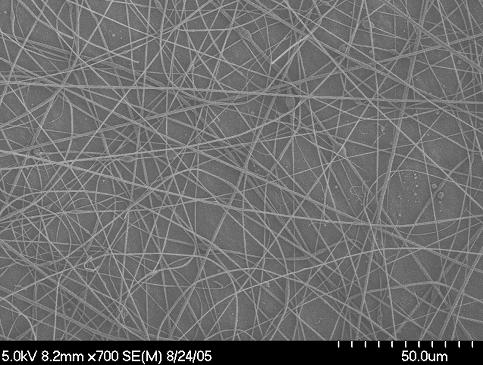 |
Electro spinning of nanofibres
Electrospinning is a very attractive route to preparing
polymer fibres with a diameter of tens of nanometres. We will use x-ray and
neutron scattering to study the internal structure. We are interested to see
how the size of the fibres defines or alters the molecular organisation of
the long chain molecules. These fibres have applications in biomedicine,
smart systems and electronics.
There are opportunities for both PhD and MSc
projects |
|
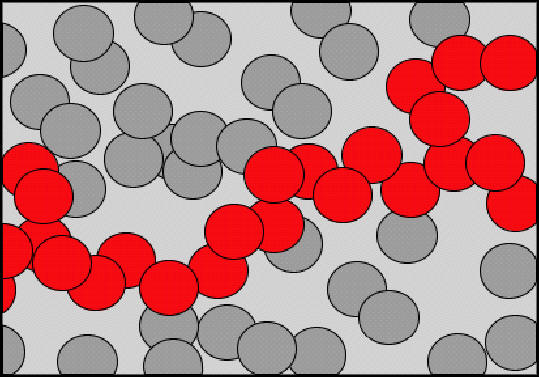
Picture courtesy of Mark Peace |
Elastic electrically
conducting composites
Polymer based composites containing electrically
conductive particles show very interesting electrical properties when
deformed, for example in tension. The conductive particles (nano or micro)
may be metallic, coated insulating particles or based intrinsically
conductive polymers. The electrically properties may be controlled by their
shape and dispersion in the polymer matrix. This project will explore the
properties of these novel materials, using electrical measurements, in-situ
deformation in a low vacuum and environmental scanning electron microscopes,
and computational modelling. These composites have applications in smart
systems, smart textiles, sensors and active electronics.
There are opportunities for both PhD and MSc
projects |
|
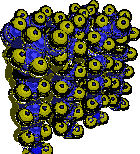 |
Modelling crystallization in
polymers
This project focuses on how long chain molecules
crystallize. Usually polymer crystals take the form of chain folded
lamellae. We have developed a novel broad Q neutron scattering technique
which allows us to obtain data on the molecular organisation over the
complete crystallization process. The focus of this project is to develop
and use computational molecular modelling techniques to provide prospective
models of each stage of the crystallisation process. These models will be
then tested quantitatively against the neutron scattering data.
There are opportunities for both PhD and MSc
projects |
|
 |
Biophysics of elastic proteins
Proteins such gluten or elastin show high levels of
elasticity. This project focuses on the experimental study of this
elasticity to seek a molecular understanding of the processes involved. The
project will involve the use Raman Microscopy, AFM, x-ray scattering and
will explore the possibility of preparing microfibres by electrospinning to
facilitate study.
|
|
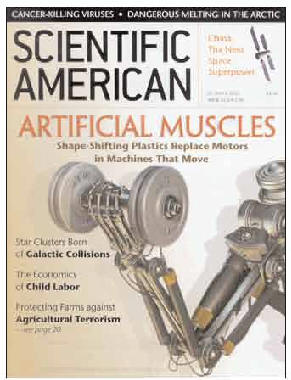 |
Artificial
Muscles
This programme area is focused on novel motion-producing
devices, actuators, motors and generators based on polymers that change
shape when stimulated electrically. The programme involves projects which
centre on understanding the physics underlying thsi novel behaviour and
projects which are more directed towards particular application areas. One
such area is vibrational damping as a therapeutic device for those with
Parkinson's Disease and other biomedical applications.
|
|

|
Controlled
crystallisation of pharmaceutical compounds
This project is centred on the physics of crystallisation
of pharmaceutical compounds and the control of the crystallisation process.
The physical state of a pharmaceutical compound is critical to its
effectiveness on ingestion. Preventing crystallisation and/or controlling
crystal morphology are essential for many preparations. This project focuses
on the fundamentals and will use experimental methods including x-ray
scattering and advanced microscopy.
|
|
 |
Polymer Research
using Synchrotron Radiation
The UK's new synchrotron source Diamond will be coming
on-line next year and there are opportunities for working on projects on polymers which will exploit the power of
the x-ray beams available at this new source. Diamond is situated 30 minutes
away from Reading so this is a great opportunity to get experience of using
large scale facilities.
|
|
 |
Polymer Research using Neutron Scattering Procedures
ISIS the World's most powerful pulsed neutron source is
located 30 minutes travel from Reading. Many of the projects within the
Polymer Science Centre make use of the neutron scattering facilities at ISIS.
There are lots of opportunities to get involved with a growing technique and
with a 2nd target station coming on-line soon a great opportunity to get
involved in some ground breaking research.
|
